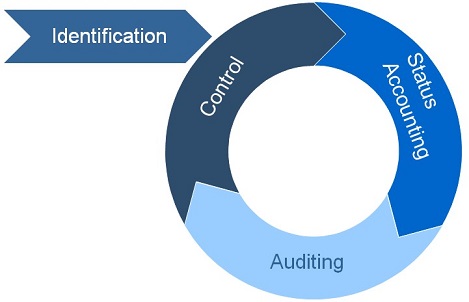
What is Configuration Management?
The purpose of configuration management is to “identify, track and protect” the products of a project (Prince 2, 2002, p. 263).A project’s configuration is the sum of total of its products or assets including management products. One product may have many configuration items and these can be shown in a configuration breakdown.
Configuration management provides processes and systems for managing, protecting and controlling all of the projects products. It keeps files of the project products, recording their status, changes, and their relationships to each other. It ensures safe storage, controls access to the products and it enables auditing and status accounting of the items during and after the products creation.
Without configuration management managers have little control of the status of the product.
Configuration Management is closely linked to quality control and change control.
Without configuration management managers have little control of the status of the product, for example;
- which version is the latest,
- who has the product for review,
- whether actions from quality reviews have been taken,
- what changes have been made and
- what effect those changes will have on related products.
The Configuration Management Process
Configuration management processes are different depending on the nature of the organization. The process described here is defined in ISO 10007:1996 and illustrates the scope of configuration management. The image below illustrates the process, which begins with Identfication and then follows a circular process of Control Status, Accounting and Auditing.
Prince 2 includes a fifth stage called planning, this is when decisions are made about the level of configuration management that will be required and the mechanisms, processes and responsibilites that will be used to achieve it. The results are recorded in a Configuration Management strategy.
During identification the configuration items are defined. This closely links to the scope definition of the project and configuration items will be identified from the Product and Work Breakdown Structures. Using a Configuration Item Record, each item will be given a unique identifier and key information will be recorded like the current status, location, any correspondence, connections to other products, and any changes. At the end of each stage of approval or quality review the item’s will be ‘baselined’ ready for use. An item’s baseline can only be updated through a formal change control process.
Once identified the products are controlled. Masters are usually held by the Configuration Librarian, and issues are logged and tracked, some security may be needed and copies are kept to a minimum.
Configuration Status Accounting
Configuration Auditing
Auditing verifies that the actual status of the products match the configuration management records. Physical audits check that the products match their specifications. Functional audits check that the products perform the functions that they were intended and system audits check that the processes, and systems are operating correctly.The role of configuration management extends beyond the life cycle of, and the configuration of a project will accompany the handover of the project’s products to operations.
Configuration Management references
Office of Government Commerce (2002), Managing Successful Projects with PRINCE2, London: TSOOffice of Government Commerce (2009), Managing Successful Projects with PRINCE2: 2009 Edition, London: TSO
EN ISO 10007:1996, ISO 10007:2003, Quality management systems - Guidelines for configuration management.
Read more on Project Management
- Project Management articles
- Project audits
- Configuration Management
- Construction Management
- Project funding
- Project methods vs tools and techniques
- Project monitoring and control
- Small business productivity
- Project Triangle
- What is programme management
- Why a project manager
- Why Project Management fails

